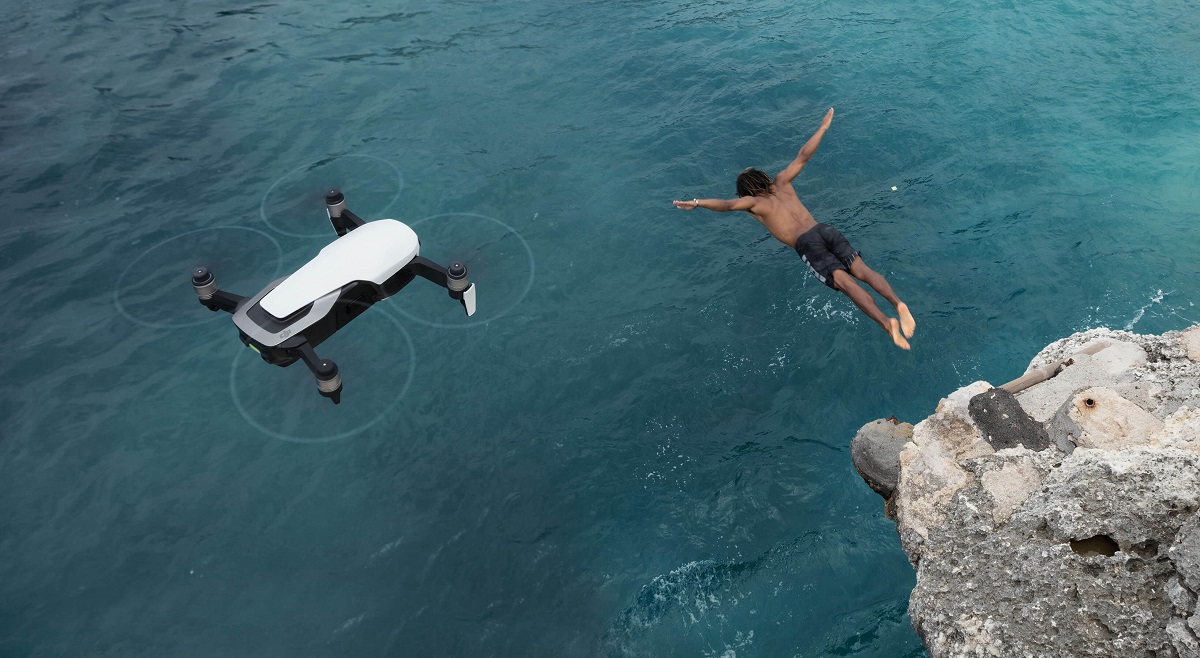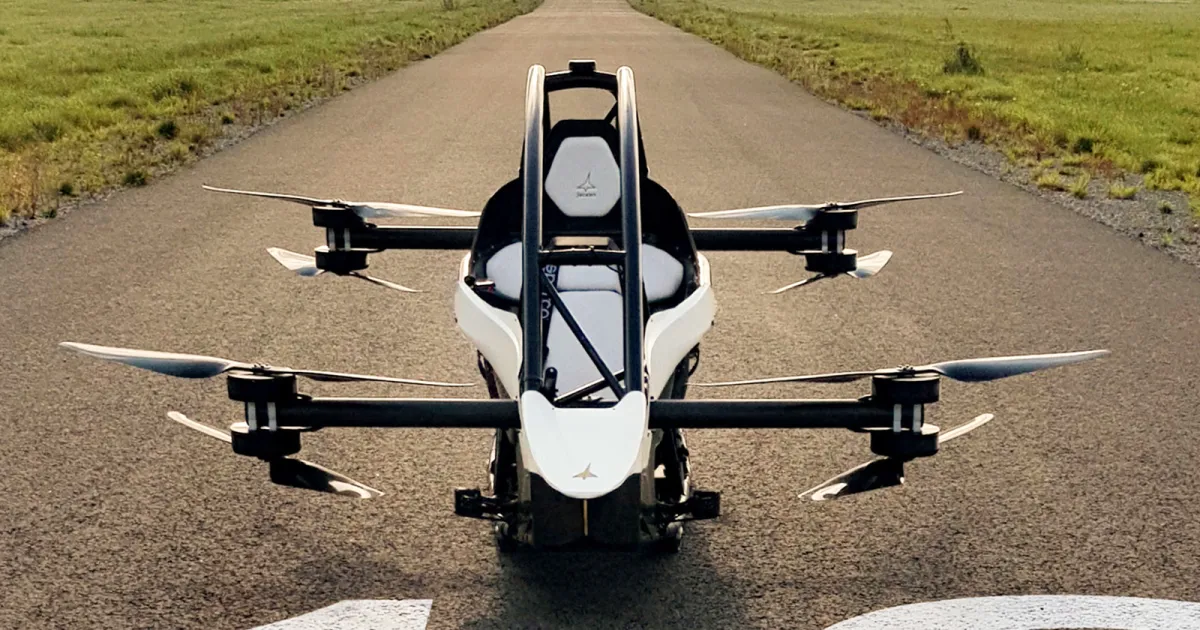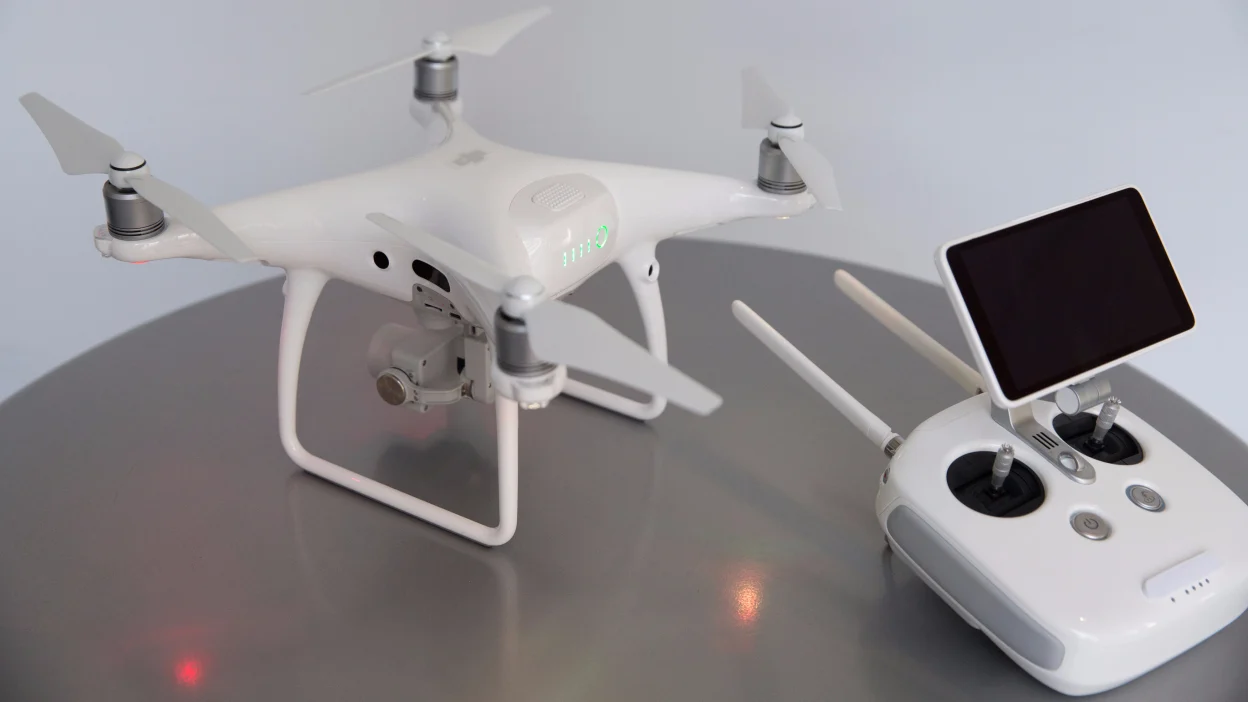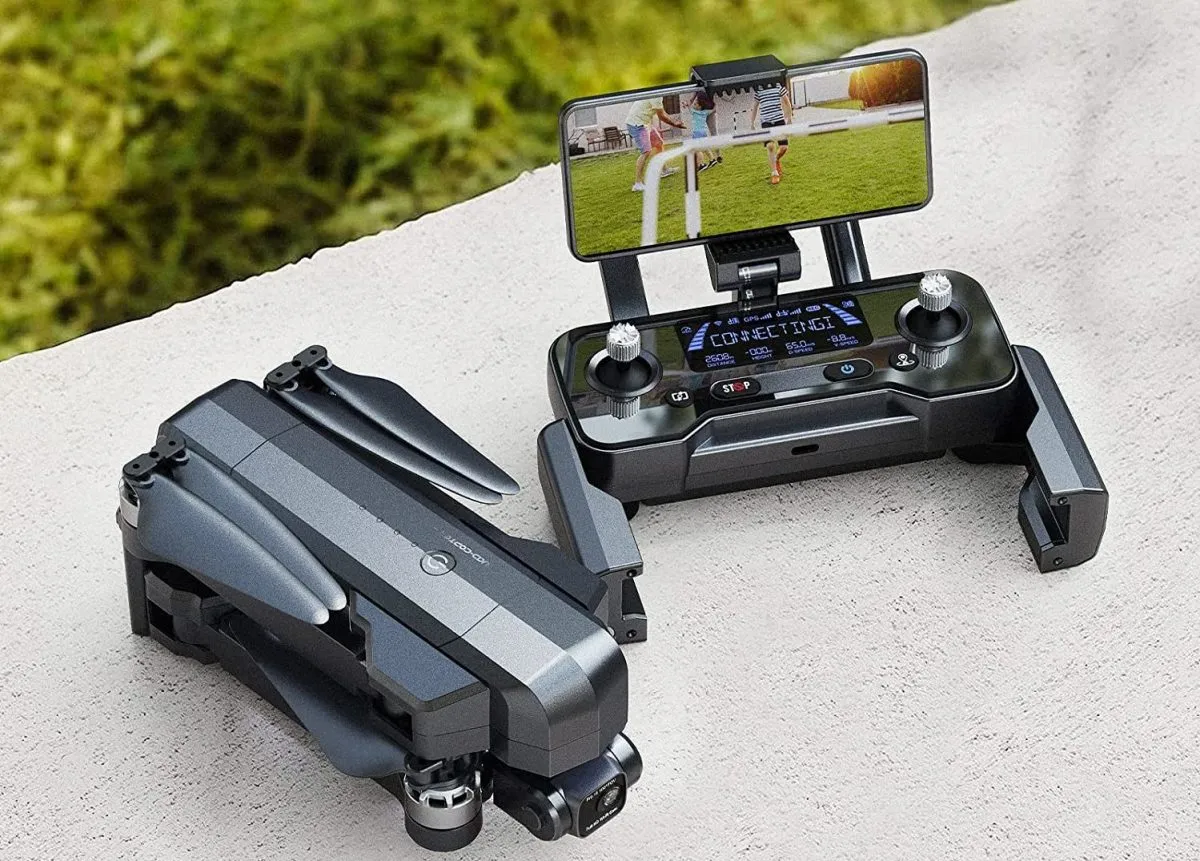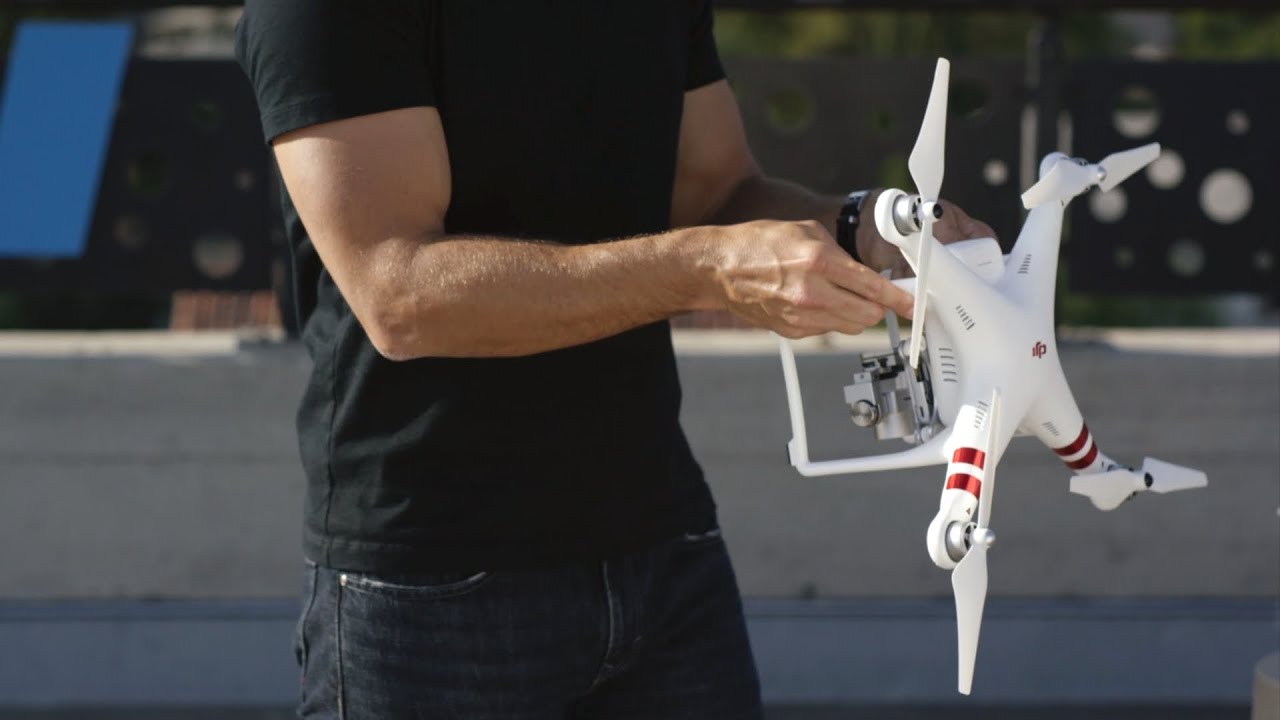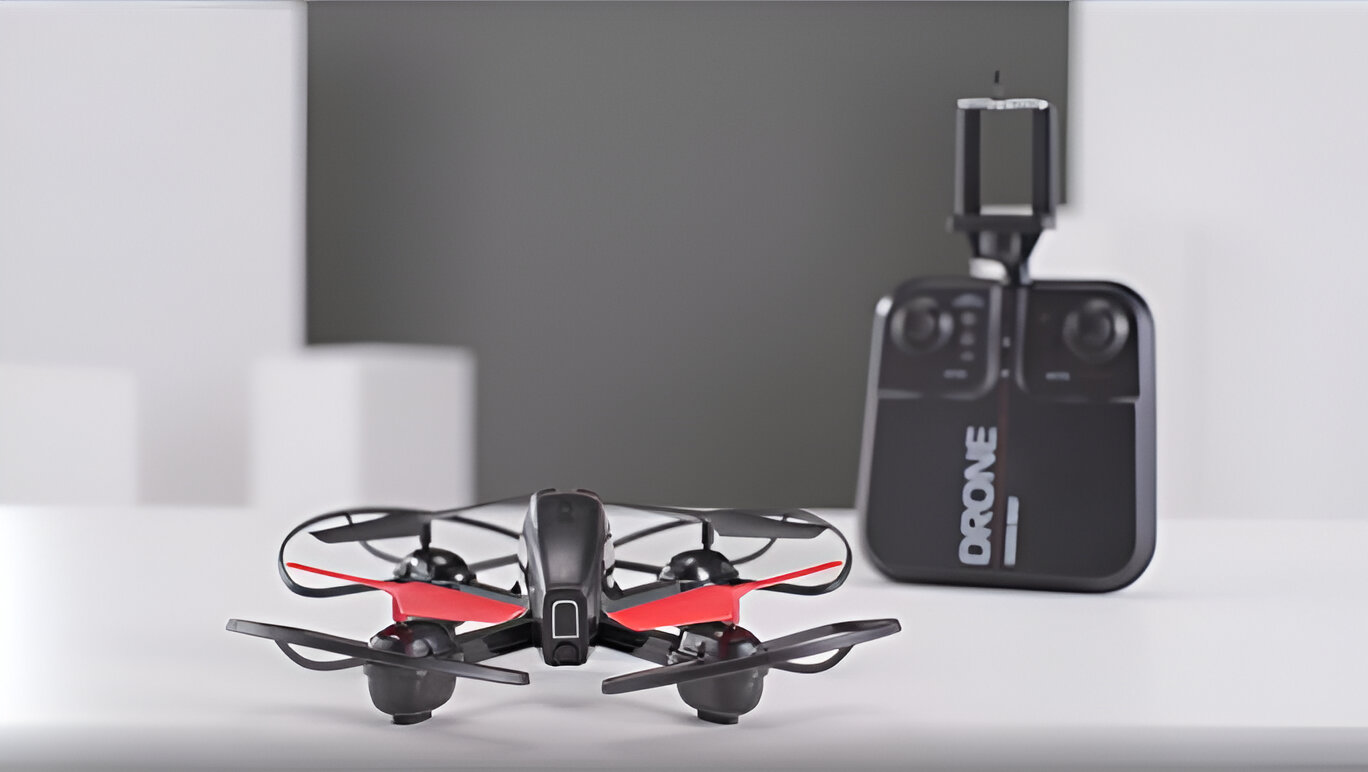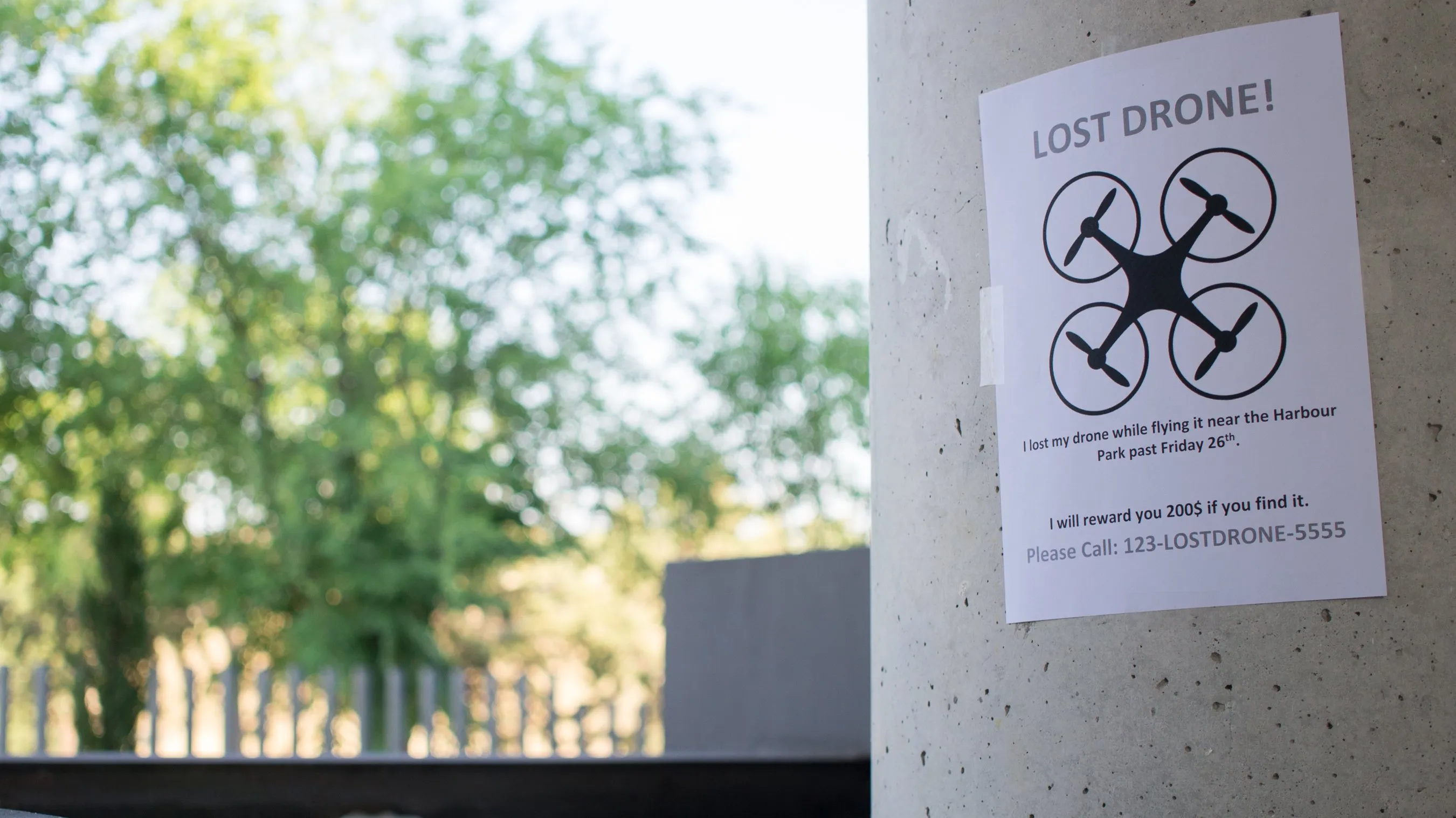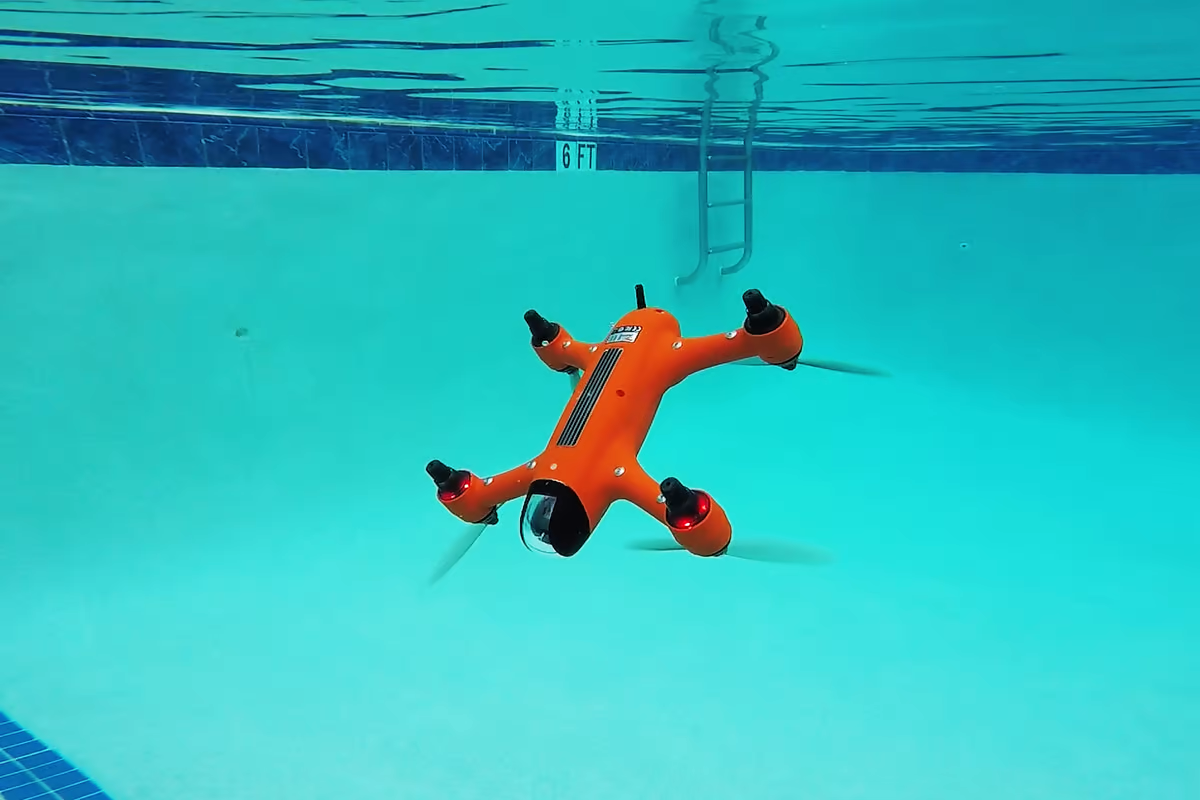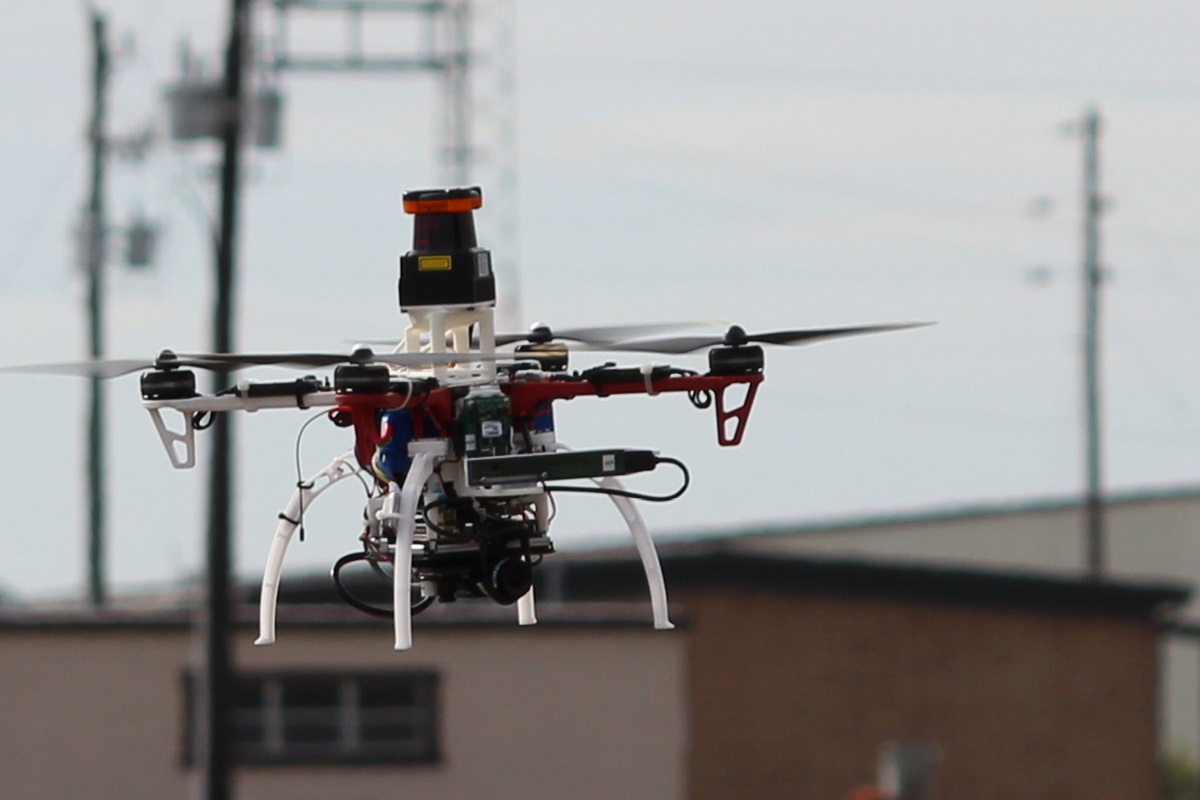Introduction
Are you looking to take your drone flying experience to the next level? Imagine having the ability to make your drone follow you around as you engage in outdoor activities or capture stunning footage. Self-following drones have become increasingly popular among enthusiasts and professionals alike, offering a unique perspective and unlocking new creative possibilities.
In this article, we will explore the exciting world of self-following drones and provide you with a comprehensive guide on how to make your drone follow you. Whether you’re an adrenaline junkie looking to document your outdoor adventures or a filmmaker wanting to capture cinematic shots, mastering the art of self-following with your drone can be incredibly rewarding.
To successfully make your drone follow you, it is essential to choose the right drone model that comes equipped with advanced features such as GPS and intelligent flight modes. These features allow your drone to autonomously track and follow your movements, ensuring smooth and seamless footage without the need for constant manual control.
Understanding the functionalities of GPS and intelligent flight modes is crucial in optimizing the performance of your self-following drone. GPS technology enables your drone to accurately track and maintain its position in real-time, while intelligent flight modes, such as follow mode or active track, enable the drone to lock onto a target and intelligently follow its movements.
Before embarking on your self-following drone adventure, it is essential to properly prepare and set up your drone. This includes ensuring that your drone’s firmware is up to date, calibrating the sensors for accurate positioning, and properly securing any accessories or attachments. By taking these preparatory steps, you can guarantee a safe and successful self-following experience.
Choosing the Right Drone for Self-Following
When it comes to making your drone follow you, selecting the right drone model is essential. Not all drones are capable of self-following functionality, so it’s crucial to consider certain factors before making your purchase.
Firstly, ensure that the drone you choose has built-in GPS capabilities. GPS technology allows the drone to accurately track its own position as well as the position of the target it’s following, resulting in smoother and more reliable self-following. Additionally, GPS-enabled drones are often equipped with intelligent flight modes, such as follow mode or active track, which make self-following even easier.
Another important consideration is the drone’s flight time and battery life. Self-following requires the drone to be in the air for an extended period, so choose a drone that offers a sufficient flight time to capture all the action. It’s also important to consider battery life and whether the drone comes with spare batteries or a quick charging option to minimize downtime.
Additionally, look for drones that offer obstacle avoidance capabilities. This feature uses sensors to detect and avoid obstacles in the drone’s flight path, ensuring a safe and collision-free self-following experience. Obstacle avoidance is especially important when flying in dynamic environments with trees, buildings, or other potential hazards.
Consider the camera capabilities of the drone as well. Depending on your specific needs, you may want a drone with a high-quality, stabilized camera that can capture smooth and clear footage. Look for drones that offer features such as high-resolution video recording, adjustable gimbal, and the ability to shoot in various modes like slow motion or panoramic.
Last but not least, take into account the portability and ease of use of the drone. If you plan on taking your drone on outdoor adventures, you’ll want a lightweight and compact drone that is easy to carry and transport. Additionally, look for drones with intuitive controls and user-friendly interfaces to ensure a seamless and hassle-free self-following experience.
By carefully considering these factors, you can select the right drone for self-following that suits your specific needs and preferences. Remember to research and read reviews before making a final decision to ensure you find a drone that offers the perfect balance of features, performance, and value for money.
Understanding GPS and Intelligent Flight Modes
GPS (Global Positioning System) and intelligent flight modes play a crucial role in the functionality and effectiveness of self-following drones. Let’s take a closer look at these technologies to better understand how they contribute to the autonomous tracking and following capabilities of drones.
GPS technology allows your drone to determine its precise location and navigate in real-time. By connecting to GPS satellites, the drone can continuously receive positioning signals, allowing it to accurately track its own movements as well as the movements of the target it’s following. This ensures that the drone stays synchronized with the target and maintains an optimal distance for capturing smooth and cinematic footage.
Intelligent flight modes further enhance the self-following capabilities of GPS-enabled drones. These modes utilize advanced algorithms and computer vision technology to automatically track and follow targets. One popular intelligent flight mode is follow mode, which allows your drone to lock onto a target (typically a person or object) and track its movements autonomously. This mode enables the drone to adjust its speed and direction accordingly, keeping the target centered in the frame at all times.
Another intelligent flight mode is active track. This mode allows you to use your drone’s camera or remote controller to select a target, and the drone will then track and follow it based on its visual recognition. This is particularly useful when you want to track a specific subject or capture unique angles during self-following.
Some drones also offer additional intelligent flight modes, such as waypoint navigation. With this mode, you can pre-plan a flight path for your drone by setting waypoints on a map. The drone will then follow the designated route, automatically adjusting its speed and altitude as needed.
It’s important to note that GPS signals might not always be available or accurate in certain areas, such as indoors or in dense urban environments. In such cases, drones may rely on alternative positioning systems, such as GLONASS or vision sensors, to maintain their position and perform self-following functionalities.
In summary, GPS technology and intelligent flight modes are integral to the autonomous tracking and following capabilities of self-following drones. GPS allows for precise positioning and navigation, while intelligent flight modes utilize advanced algorithms to track and follow targets automatically. Understanding these technologies will help you effectively utilize the self-following features of your drone and capture stunning footage.
Preparing Your Drone for Self-Following
Before embarking on your self-following adventure, it’s important to properly prepare your drone to ensure optimal performance and a safe flying experience. Here are some essential steps to follow when getting your drone ready for self-following:
1. Firmware Update: Check if there are any firmware updates available for your drone and its controller. Updating the firmware ensures that your drone has the latest software enhancements, bug fixes, and performance improvements for self-following and other functionalities.
2. Sensor Calibration: Calibrate the sensors on your drone to ensure accurate positioning and stable flight. Most drones have an automated calibration process that involves rotating the drone in different directions or placing it on a level surface. Follow the manufacturer’s instructions for the specific calibration process for your drone model.
3. Secure Attachments: If you’re using any accessories or attachments, such as a camera gimbal or additional payload, make sure they are securely attached to the drone. Loose or improperly secured attachments can affect the balance and stability of the drone during self-following, potentially leading to erratic movements or even accidents.
4. GPS Signal Acquisition: Allow some time for your drone to acquire GPS signals before taking off. This ensures that the drone has a strong and stable GPS connection, which is essential for accurate positioning and smooth self-following. Find an open area away from tall buildings or other potential signal obstructions for optimal GPS signal reception.
5. Flight Path Planning: Plan your flight path or route in advance, especially if you’re using waypoints or other intelligent flight modes. Consider the terrain, obstacles, and any restrictions in the area where you’ll be flying. Having a well-planned flight path ensures a smoother and safer self-following experience.
6. Battery Check and Spare Batteries: Check the battery level of your drone and ensure it has enough charge to complete your self-following session. Consider bringing spare batteries or a portable charger if you anticipate a longer flight time. Running out of battery mid-flight can disrupt the self-following process and result in an incomplete or interrupted footage.
7. Pre-flight Checklist: Perform a pre-flight checklist to ensure all the essential components of the drone, such as propellers, motor functionality, and camera gimbal, are in good working condition. Also, check the remote controller and ensure it is properly synced with the drone.
By following these preparation steps, you can ensure that your drone is ready for self-following adventures. Properly preparing your drone not only enhances the performance of the self-following features but also minimizes the risk of accidents or malfunctions during flight. Now that your drone is ready, let’s move on to setting up the follow mode for a successful and enjoyable self-following experience.
Setting Up the Follow Mode on Your Drone
Follow mode is a popular intelligent flight mode that allows your drone to track and follow a target autonomously. To set up the follow mode on your drone, follow these steps:
1. Activate GPS: Ensure that the GPS mode is activated on your drone. This is usually done by toggling the GPS switch or selecting the GPS mode in the drone’s settings. Activating GPS is essential for accurate positioning and successful follow mode operation.
2. Select Follow Mode: Access your drone’s intelligent flight modes menu through the companion app or remote controller. Locate the follow mode option and select it. The interface may vary depending on the drone model, but most drones have a dedicated follow mode setting.
3. Target Selection: Choose the target that you want your drone to follow. Some drones allow you to select the target manually by using the camera view or tapping on the screen, while others may have face detection or object tracking capabilities. Follow the instructions provided by the drone manufacturer to select the target.
4. Adjust Parameters: Depending on your drone model, you may have the option to adjust specific parameters such as distance, altitude, or speed for the follow mode. Experiment with these settings to achieve the desired follow distance and speed that best suits your self-following needs.
5. Start the Follow Mode: Once you’ve set up the follow mode parameters, confirm your settings and initiate the follow mode. The drone will begin tracking and following the selected target based on its GPS positioning and intelligent flight algorithms. Make sure you have a clear line of sight and monitor the drone’s behavior to ensure that it’s following smoothly.
6. Modify Follow Path: During the self-following flight, you may want to adjust the follow path or change the target. Most drones allow you to manually adjust the drone’s position by using the remote controller sticks, or you can reselect the target by tapping on it in the app interface. This gives you the flexibility to capture different angles and perspectives while maintaining the overall follow mode operation.
7. Exit Follow Mode: To exit the follow mode, either manually toggle the follow mode off in the app or switch to a different flight mode on your drone’s remote controller. Remember to fly the drone manually or switch to other intelligent flight modes if you no longer want the drone to follow and track your movements.
By following these steps, you can successfully set up and activate the follow mode on your drone. Familiarize yourself with the specific settings and options provided by your drone model, as they may vary. Once you’ve mastered setting up the follow mode, it’s time to explore some tips and techniques for successful self-following to capture breathtaking footage.
Calibrating the Follow Mode for Optimum Performance
To ensure optimal performance and accuracy while using the follow mode on your drone, it’s important to calibrate the settings and parameters for the best results. Follow these steps to calibrate the follow mode:
1. Test Flight in Open Area: Before calibrating the follow mode, perform a test flight in an open area with no obstacles or distractions. This will allow you to observe how the drone tracks and follows the target without any calibration adjustments, providing a baseline for comparison.
2. Monitor Distance and Altitude: One crucial aspect to calibrate is the distance and altitude between the drone and the target. Depending on your desired framing and subject, you may need to adjust these parameters to ensure the target remains centered and in focus throughout the self-following process. Experiment with different distances and altitudes during the test flight to find the optimal settings.
3. Fine-Tune Speed and Responsiveness: The speed and responsiveness of the follow mode can greatly impact the quality of the footage. If the drone is following too fast, it may result in shaky or jerky footage. Conversely, if the drone is following too slowly, it may not keep up with the target’s movements. Adjust the speed and responsiveness settings to achieve a smooth and natural-looking follow experience.
4. Check for Lag or Delay: Keep an eye out for any lag or delay in the drone’s response to the target’s movements. If there is a noticeable delay, it may affect the accuracy and fluidity of the self-following footage. Adjust the settings or parameters related to tracking and response time to minimize any lag and ensure real-time tracking.
5. Test Different Environments: It’s essential to test the follow mode in various environments to assess its performance. Fly the drone in different lighting conditions, such as bright sunlight or low-light situations, as well as in different terrains to evaluate how well the drone tracks and follows the target. Make any necessary adjustments based on the specific environment to optimize performance.
6. Avoid Interference: Ensure that there are no interference sources, such as Wi-Fi signals or power lines, in the vicinity that could disrupt the drone’s tracking capabilities. Interference can lead to erratic flight behavior or even loss of connection, compromising the effectiveness of the follow mode. Choose open areas with minimal interference for the best results.
7. Repeat Calibration as Needed: Regularly calibrate the follow mode if you experience any changes in drone performance or if you switch to a different target or environment. Calibration requirements may vary depending on external factors, so it’s important to repeat the process when necessary to maintain optimum performance.
By calibrating the follow mode settings for optimum performance, you can ensure that your drone tracks and follows the target accurately and smoothly. Taking the time to fine-tune these parameters will greatly enhance the quality of your self-following footage and result in visually appealing and professional-looking videos.
Tips and Techniques for Successful Self-Following with Your Drone
To make the most out of your self-following experiences with your drone, consider these tips and techniques for capturing stunning footage:
1. Plan and Scout Your Location: Before starting your self-following session, spend time planning and scouting the location. Look for interesting features, landmarks, or topography that can add depth and visual appeal to your footage. By knowing the area, you can anticipate potential obstacles and plan the flight path accordingly.
2. Utilize Obstacle Avoidance: If your drone is equipped with obstacle avoidance features, make sure they are enabled and functioning properly. Utilizing obstacle avoidance can prevent collisions and ensure a safer self-following experience. However, it’s still important to visually check for hazards and fly your drone responsibly.
3. Consider Lighting Conditions: Lighting plays a crucial role in the quality of your footage. Try to shoot during the golden hour, which occurs during the early morning or late afternoon when the sunlight is soft and warm. Avoid shooting in harsh, midday sunlight, as it can create strong shadows and overexposure.
4. Vary Perspectives and Angles: Experiment with different perspectives and angles to add visual interest to your footage. Combine high and low shots, fly close to the ground, or incorporate sweeping aerial movements. By varying your perspectives, you can create dynamic and captivating footage that engages viewers.
5. Use Smooth Movements: Smooth and controlled movements are key to capturing professional-looking footage. Avoid abrupt and jerky motions, as they can make the self-following footage appear unstable. Use slow and gradual movements to ensure smooth transitions and a more cinematic feel.
6. Frame Your Subject: Keep your subject, whether it’s a person, vehicle, or object, well-framed within the shot. Experiment with different compositions to highlight the subject and its surroundings. Applying the rule of thirds can help create a visually balanced and aesthetically pleasing composition.
7. Practice Panning and Tracking: Master the art of panning and tracking to follow the subject smoothly. Practice keeping the target centered within the frame while maintaining a consistent distance. This technique requires coordination between your drone’s movement and the control inputs, so practicing and honing your skills is essential.
8. Use Intelligent Flight Modes Creatively: Explore other intelligent flight modes in addition to follow mode to add variety and creativity to your footage. Experiment with active track, waypoint navigation, or any other modes your drone offers. Each mode has its unique capabilities that can help you achieve different visual effects and storytelling elements.
9. Monitor Battery Life: Keep an eye on your drone’s battery life during self-following sessions. Be mindful of your flight time and make sure you have enough battery power to safely land your drone. It’s a good practice to bring extra batteries or a portable charger to extend your shooting time and avoid missing out on capturing incredible moments.
10. Fly Responsibly and Respect Local Regulations: Always follow applicable laws, regulations, and guidelines when flying your drone. Respect privacy, avoid flying over restricted areas or crowds, and maintain a safe distance from people and property. It’s important to fly responsibly to ensure the safety of others and the continued positive perception of drone enthusiasts.
By applying these tips and techniques, you can elevate your self-following footage to new heights. Don’t be afraid to experiment and push your creative boundaries. With practice and creativity, you’ll be able to capture breathtaking footage that truly showcases your adventures and storytelling skills.
Safety Considerations when Using Follow Mode
While using the follow mode on your drone can result in incredible footage and unique perspectives, it’s crucial to prioritize safety at all times. Here are some important safety considerations to keep in mind when using the follow mode:
1. Fly in Open Areas: Choose open areas with ample space to fly your drone safely. Avoid crowded or heavily populated areas, and always maintain a safe distance from people, vehicles, and property. Flying in open areas reduces the risk of accidents and potential collisions.
2. Keep Visual Line of Sight: Maintain a clear line of sight with your drone throughout the self-following session. By keeping visual contact, you can monitor the drone’s behavior, detect any potential hazards or malfunctions, and ensure that it’s following the target accurately.
3. Beware of Obstacles: Be vigilant of any potential obstacles in the flight path, such as trees, buildings, or power lines. Even with obstacle avoidance technology, it’s important to visually inspect the surrounding area to avoid accidents. Take note of any changes in the environment or unexpected obstacles that may hinder the self-following process.
4. Consider Weather Conditions: Weather conditions can greatly impact the performance of your drone. Avoid flying in strong winds, rain, or other adverse weather conditions that can compromise the stability and control of your drone. Be aware that high altitudes, extreme temperatures, or gusty winds may affect the drone’s ability to track and follow accurately.
5. Monitor Battery Levels: Keep a close eye on your drone’s battery levels during self-following flights. Avoid draining the battery to its minimum level to maintain control and stability. Make sure to land your drone safely before the battery level becomes critically low to prevent unexpected crashes or loss of power mid-flight.
6. Respect Local Regulations: Familiarize yourself with the local rules and regulations governing drone usage in your area. Follow the guidelines set by aviation authorities and respect any restrictions or limitations imposed on drone flights. By adhering to the regulations, you can ensure the safety of others and the continued positive reputation of drone enthusiasts.
7. Practice Emergency Landing Procedures: Familiarize yourself with emergency landing procedures for your drone model. In case of an emergency or loss of control, knowing how to safely land your drone in a controlled manner can prevent damage to the drone or harm to people or property in the vicinity.
8. Fly Responsibly and Ethically: It’s essential to fly your drone responsibly and ethically. Respect the privacy of others, avoid flying over private property without permission, and do not disturb wildlife or natural habitats. Be a responsible drone pilot and contribute to the positive perception of drone usage.
By prioritizing safety and following these considerations, you can enjoy a safe and fulfilling self-following experience. Remember, safety should always be the top priority when operating a drone, ensuring the well-being of yourself, others, and the environment.
Troubleshooting Common Issues with Follow Mode
While using the follow mode on your drone can be exciting, you may encounter some common issues along the way. Here are some troubleshooting tips to help you overcome these challenges:
1. GPS Signal Issues: If you’re experiencing intermittent or weak GPS signal, it can affect the accuracy and stability of the follow mode. Make sure you’re in an open area away from obstructions that may interfere with the GPS signal. Additionally, ensure that your drone’s GPS module is in good condition and not obstructed by any accessories or attachments.
2. Target Recognition Problems: If your drone is having difficulty recognizing and locking onto the target, check the lighting conditions and contrast between the target and the background. Poor lighting, low contrast, or fast-moving subjects can make target recognition challenging. Try adjusting the exposure or using a different intelligent flight mode that may improve target tracking.
3. Erratic Movements: If your drone’s movements are erratic or unstable during self-following, it may be due to incorrect calibration or improper adjustment of the follow mode settings. Double-check the calibration of sensors, ensure the drone is balanced, and adjust the speed, responsiveness, and distance settings as necessary. Smooth and fluid movements are key to achieving stable footage.
4. Battery Drain: Self-following can consume more battery power than regular flights due to longer flight times and continuous usage of intelligent flight modes. Monitor your drone’s battery levels closely during self-following sessions to avoid unexpected battery drain. Consider bringing spare batteries or a portable charger to extend your flight time and capture all the footage you need.
5. Interference Issues: Interference from nearby Wi-Fi signals or electromagnetic sources can disrupt the drone’s connectivity and compromise the follow mode performance. Fly in areas with minimal interference, away from sources such as power lines, Wi-Fi routers, or high-frequency devices. If available, switch to a different frequency or channel on your remote controller to avoid interference.
6. Inconsistent Follow Path: If your drone deviates from the intended follow path or struggles to stay centered on the target, it may help to adjust the follow mode settings. Experiment with different follow distances, altitudes, or speed settings to achieve better tracking accuracy. Additionally, ensure there are no strong winds or air currents that could affect the drone’s stability and follow path.
7. Firmware and Software Updates: Keeping your drone’s firmware and companion app up to date is crucial. Manufacturers often release firmware updates that address bugs, add new features, or improve the performance of intelligent flight modes. Regularly check for firmware updates and install them accordingly to ensure the latest software enhancements for your drone’s follow mode functionality.
8. Environmental Factors: Environmental factors such as strong winds, extreme temperatures, or harsh weather conditions can impact the drone’s flight performance and follow mode accuracy. Check weather conditions before flying and avoid self-following in adverse weather. Be mindful of factors like wind speed and direction that can affect the drone’s stability and tracking abilities.
By addressing these common issues and implementing troubleshooting techniques, you can overcome challenges and ensure a smoother self-following experience with your drone. Remember to practice patience and experimentation to find the optimal settings and techniques that work best for your specific drone model and shooting conditions.
Conclusion
Mastering the art of making your drone follow you opens up a world of creative possibilities and breathtaking footage. By choosing the right drone model with GPS capabilities, understanding the functionality of intelligent flight modes, and proper preparation and calibration, you can achieve optimal performance and safety in self-following.
Throughout this guide, we’ve covered important aspects such as selecting the right drone, understanding GPS and intelligent flight modes, preparing your drone for self-following, setting up the follow mode, calibrating for optimum performance, and troubleshooting common issues. Additionally, we’ve provided valuable tips and techniques to enhance your self-following experiences.
Remember, safety should always be prioritized when operating your drone. Fly responsibly, obey local regulations, and respect the privacy and well-being of others. Regularly update your drone’s firmware and software to ensure the latest performance enhancements and bug fixes.
With practice and creativity, you can capture stunning footage, whether it’s documenting your outdoor adventures, filming action sports, or creating cinematic storytelling. So get out there, explore different environments, experiment with perspectives, and take your drone flying to new heights with self-following.
By applying the knowledge and techniques shared in this guide, you can embark on a thrilling journey of self-following, allowing your drone to effortlessly track your every move and capture awe-inspiring visuals. Happy flying, and may your self-following adventures be filled with incredible footage and unforgettable memories!







